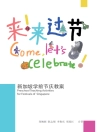Strategic Inquiry is an innovative model for promoting teacher collaboration around identifying specific “learning gaps” that keep struggling students from succeeding.
Gaps may include anything from the proper use of commas and conjunctions to concepts such as “slope” in math. The authors argue that addressing these critical learning gaps can lead to big changes in student success, in teachers’ sense of efficacy, and in school culture.
The strategic inquiry model has been implemented in schools and districts around the country, including New York City, where it was rigorously evaluated with impressive results.
As Common Core standards raise the bar for student learning ever higher, this proven approach promises to build teachers’ capacity for closing the gap between where struggling students are and where they need to be.’
قائمة المحتويات
CONTENTS
Foreword by Michael Fullan vii
Introduction 1
Part I Vision, Model, and Outcomes
9
1 How Strategic Inquiry Works 11
2 How Strategic Inquiry Pays Off 29
Part II Strategic Inquiry in Action 51
3 Moving Students to Succeed 53
4 Moving Instructional Systems to Improve Success 69
5 Moving Colleagues Toward a School Inquiry Culture 83
Part III System Support of Inquiry-Based Reform
109
6 Developing a District System of Inquiry-Based Improvement 111
7 Bringing Leader Certification Programs on Board 131
Conclusion 151
Appendixes 153
Notes 165
Acknowledgments 175
About the Authors 179
Index 181
عن المؤلف
Nell Scharff Panero is the director of the Center for Educational Leadership (CEL) in the School of Public Affairs at Baruch College, City University of New York. In 2004 she joined Baruch to teach in the Aspiring Leaders Program. Since 2005 she has codeveloped, taught in, trained trainers in, and refined (with Liz Gewirtzman) the Scaffolded Apprenticeship Model (SAM) of school improvement through leadership development. As a consultant, she has established inquiry as an engine of improvement in multiple large high schools and helped schools, districts, and universities to adapt and apply the model in both certification and noncertification versions. Her research interests include inquiry-based continuous improvement and facilitator development. Currently she runs the latest SAM iteration at Baruch (SAM Citywide) and, under the auspices of CEL, promotes broad knowledge and understanding of effective writing instruction—in particular, of strategies that were proven to close pervasive skill gaps surfaced through strategic inquiry. She holds a bachelor’s degree in English from Kenyon College, a master’s in English from Hunter College, and a doctorate in English education from New York University. Prior to teaching at Baruch, she taught English at Hunter College High School for thirteen years. Her previous publications include the
Children First Intensive Inquiry Team Handbook (New York City Department of Education, 2008) and “Starting Small for Big School Improvement, ”
Principal Leadership (April 2010, with D. A. De Angelis and J. E. Talbert).
Joan E. Talbert is Senior Research Scholar Emerita in Stanford University’s School of Education. She joined the faculty in 1977 and cofounded (with Milbrey Mc Laughlin) the Center for Research on the Context of Teaching (CRC) in 1987 through a U.S. Department of Education Center grant. She was a member-at-large of the American Education Research Association Council and the National Research Council’s Committee on Education Finance. She holds a bachelor’s degree in sociology from Vassar College and a master’s degree and doctorate in sociology from the University of Washington. With CRC colleagues, she investigates conditions that shape teaching and learning, especially school-based professional communities. Through more than a dozen multiyear studies in school districts across the country, she has documented the results of various approaches to fostering teacher learning communities that continuously improve student achievement. Currently she is studying successful district reform strategies in the Central Valley of California. Her previous books include
Building School-Based Teacher Learning Communities in Schools: Professional Strategies to Improve Student Achievement, coauthored with M. W. Mc Laughlin (Teachers College Press, 2006), and
Professional Communities and the Work of High School Teaching, coauthored with M. W. Mc Laughlin (University of Chicago Press, 2001). Her recent book chapters and articles include “Collaborative Inquiry to Expand Student Achievement in New York City Schools, ” in
Education Reform in New York City: Ambitious Change in the Nation’s Most Complex School System, ed. J. O’Day, C. Bitter, and J. Gomez (Harvard Education Press, 2011); “Professional Learning Communities at the Crossroads: How Systems Hinder or Engender Change, ”
International Handbook of Educational Change, vol. 2 (Springer Press, 2010); “Conceptions of Evidence Use in School Districts: Mapping the Terrain, ” coauthored with C. E. Coburn,
American Journal of Education (August 2006).












